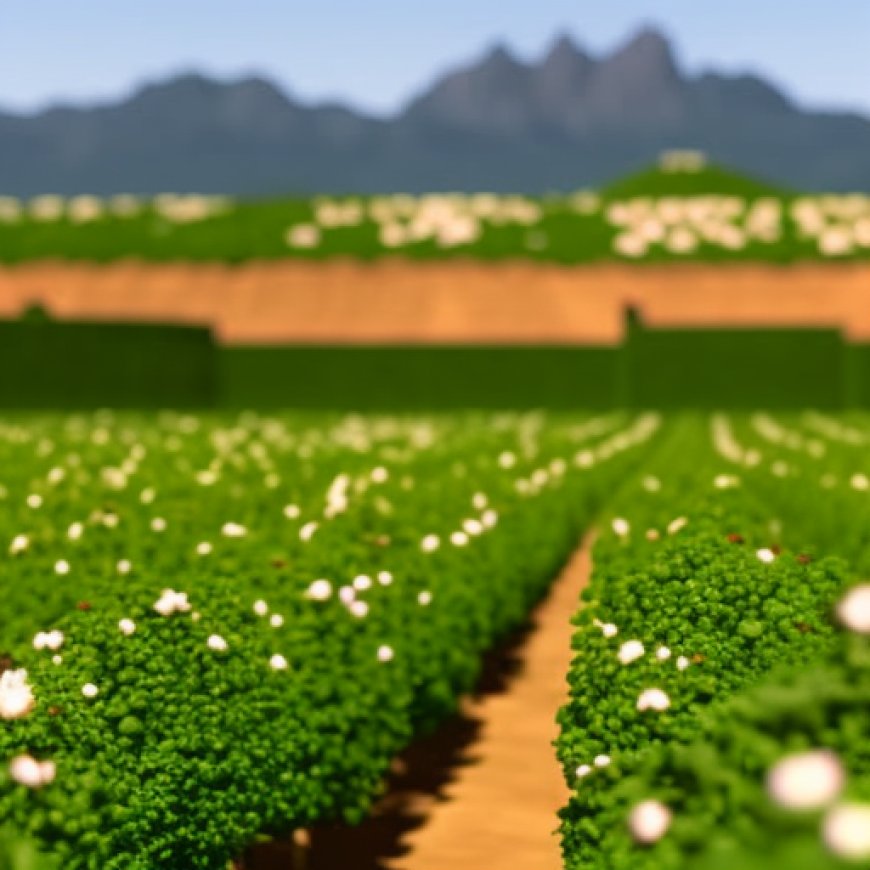Mexico’s agricultural exports see growth in early 2024
Mexico's agricultural exports see growth in early 2024 hortidaily.com


Mexico’s Agricultural Exports Reach Record High in 2024

In the initial months of 2024, Mexico experienced a significant uptick in its agricultural exports, marking an 8.85% increase to reach a valuation of US $9.06 billion. This growth is reported by the Ministry of Agriculture and Rural Development (SADER), referencing data from the Bank of Mexico. The period also saw a modest rise in agricultural imports by 2.3%, totaling $7.57 billion. Consequently, Mexico achieved an agricultural trade surplus of $1.49 billion during January and February, setting a new record for the country.
Sustainable Development Goals (SDGs)
- SDG 2: Zero Hunger
- SDG 8: Decent Work and Economic Growth
- SDG 12: Responsible Consumption and Production
- SDG 17: Partnerships for the Goals
Among the high-demand exports, tomatoes led to revenues of $630 million, positioning them as one of Mexico’s largest agricultural export revenue sources. Other significant exports included tequila and mezcal ($621 million), avocados ($594 million), and fresh strawberries and raspberries ($531 million).
Key Exports and Growth
- Chocolate and cacao products: 71.7% increase
- Tea, coffee, and Yerba maté: 64.5% increase
- Orange juice: 62.4% increase
- Guavas, mangos, and mangosteens: 48.6% increase
- Grapes and raisins: 38% increase
- Cattle: 35.9% increase
The majority of these exports were destined for the United States, although Mexican agricultural products also found markets in Asia and Europe.
Sources
SDGs, Targets, and Indicators
1. Which SDGs are addressed or connected to the issues highlighted in the article?
- SDG 2: Zero Hunger
- SDG 8: Decent Work and Economic Growth
- SDG 12: Responsible Consumption and Production
- SDG 17: Partnerships for the Goals
2. What specific targets under those SDGs can be identified based on the article’s content?
- SDG 2.3: By 2030, double the agricultural productivity and incomes of small-scale food producers, in particular women, indigenous peoples, family farmers, pastoralists, and fishers, including through secure and equal access to land, other productive resources, and inputs, knowledge, financial services, markets, and opportunities for value addition and non-farm employment.
- SDG 8.3: Promote development-oriented policies that support productive activities, decent job creation, entrepreneurship, creativity, and innovation, and encourage the formalization and growth of micro-, small- and medium-sized enterprises, including through access to financial services.
- SDG 12.2: By 2030, achieve the sustainable management and efficient use of natural resources.
- SDG 17.17: Encourage and promote effective public, public-private, and civil society partnerships, building on the experience and resourcing strategies of partnerships.
3. Are there any indicators mentioned or implied in the article that can be used to measure progress towards the identified targets?
- Indicator for SDG 2.3: Agricultural productivity and incomes of small-scale food producers.
- Indicator for SDG 8.3: Job creation, entrepreneurship, and growth of micro-, small- and medium-sized enterprises in the agricultural sector.
- Indicator for SDG 12.2: Sustainable management and efficient use of natural resources in agricultural production.
- Indicator for SDG 17.17: Existence and effectiveness of public-private partnerships in promoting agricultural exports.
SDGs, Targets, and Indicators
| SDGs | Targets | Indicators |
|---|---|---|
| SDG 2: Zero Hunger | 2.3: By 2030, double the agricultural productivity and incomes of small-scale food producers. | Agricultural productivity and incomes of small-scale food producers. |
| SDG 8: Decent Work and Economic Growth | 8.3: Promote development-oriented policies that support productive activities, decent job creation, entrepreneurship, creativity, and innovation. | Job creation, entrepreneurship, and growth of micro-, small- and medium-sized enterprises in the agricultural sector. |
| SDG 12: Responsible Consumption and Production | 12.2: By 2030, achieve the sustainable management and efficient use of natural resources. | Sustainable management and efficient use of natural resources in agricultural production. |
| SDG 17: Partnerships for the Goals | 17.17: Encourage and promote effective public, public-private, and civil society partnerships. | Existence and effectiveness of public-private partnerships in promoting agricultural exports. |
Copyright: Dive into this article, curated with care by SDG Investors Inc. Our advanced AI technology searches through vast amounts of data to spotlight how we are all moving forward with the Sustainable Development Goals. While we own the rights to this content, we invite you to share it to help spread knowledge and spark action on the SDGs.
Fuente: hortidaily.com

Join us, as fellow seekers of change, on a transformative journey at https://sdgtalks.ai/welcome, where you can become a member and actively contribute to shaping a brighter future.







